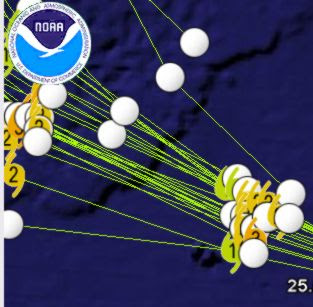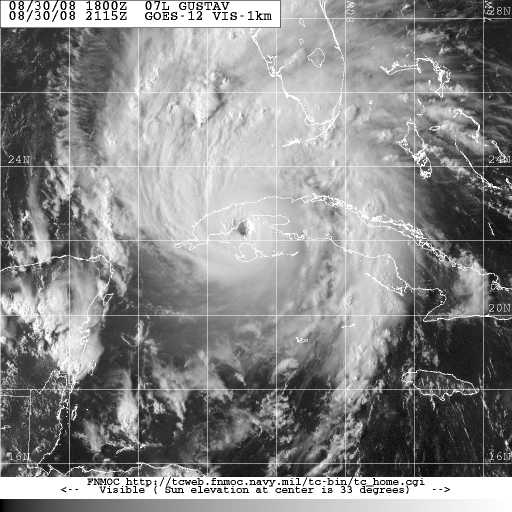The Materials Management Service reported this week that "52 of the 3,800 offshore oil and gas production platforms in the Gulf of Mexico had been destroyed by Hurricane Ike."
Also down for the count were three jack-up drilling rigs, and one platform drilling rig
"Initial estimates are that the 52 destroyed production platforms produced a total of 13,300 barrels of oil per day and 90 million cubic feet of gas per day."
Pipelines seemed to be a real target of the storm --
"To date, MMS has received reports of six gas transmission pipeline systems with damage. Analysis of the impact that this damage may have on resuming production is underway. Operators have begun to test and inspect other pipeline systems to evaluate the full extent of any damage. Considering the large impacted area, this will take some time to complete the inspections."
The MMS is working with operators to get passed some of the problems holding back resumption --
"Resuming Production – Production from the Gulf of Mexico accounts for 25 percent of the oil produced domestically and 15 percent of the natural gas produced domestically. ...
"Working with oil and gas operators, there are tools that can be used to assist in resuming production which is curtailed because of damaged pipelines. These tools include barging, temporary flaring, and re-routing of product through other pipelines. Use of these tools requires that offshore operators submit requests to MMS for approval."
MMS reports from yesterday estimated that approximately 59% of the oil production in the Gulf is shut-in and that approximately 56% of the natural gas production in the Gulf is shut-in.
The MMS used reports from operators to estimate that personnel are still evacuated from a total of 145 production platforms, equivalent to 20.1 % of the 694 manned platforms in the Gulf of Mexico.
If you are keeping count. That is two major energy infrastructure components that Hurricane Ike targeted severely: the electric grid and the offshore oil structures.
Strange fact of the day:
As I was driving home from Beaumont, I locked in on a Public Radio program in Louisiana that had various utility officials and emergency officials talking about what we learned from the storms. The Entergy spokesperson discussed how the electric utility plans for storms by doing mock storm drills before the start of the hurricane season.
The company which serves, among other areas, the New Orleans region and part of the Houston region, did its normal drill before the start of the 2005 season that saw Hurricane Katrina devastate the New Orleans region.
It was kind of freaky to hear that that drill, done several months before Katrina, was a scenario of a mock major hurricane hitting New Orleans.
Talk about prescience.
But it got a little more weird.
I guess based on the fact that in 2005 Hurricane Katrina was followed a month later by Hurricane Rita hitting Texas, the company this year did a mock drill of a a major hurricane followed a week later by another.
Of course that is just what happened. Hurricane Gustav sacked South Louisiana, the New Orleans region and ripped through the heart of the Louisiana as it dragged its way north. Twelve days later Hurricane Ike slammed into Houston.
A couple of observations.
1. Maybe the TV channels needs to hire Entergy to do long range forecasting.
2. We seem to be getting it right. We have a lot better understanding of hurricanes -- where they will go and the type of damage they will inflict.
Now we need to have a national dialogue on how, with better pre-hurricane planning and preparation ( including better building practices) we can spend the majority of our efforts on gettting out of the way of the storm and less on months and years of rebuilding.
How do we armor our infrastructure and our cities from these beasts?
-- steve buser









































